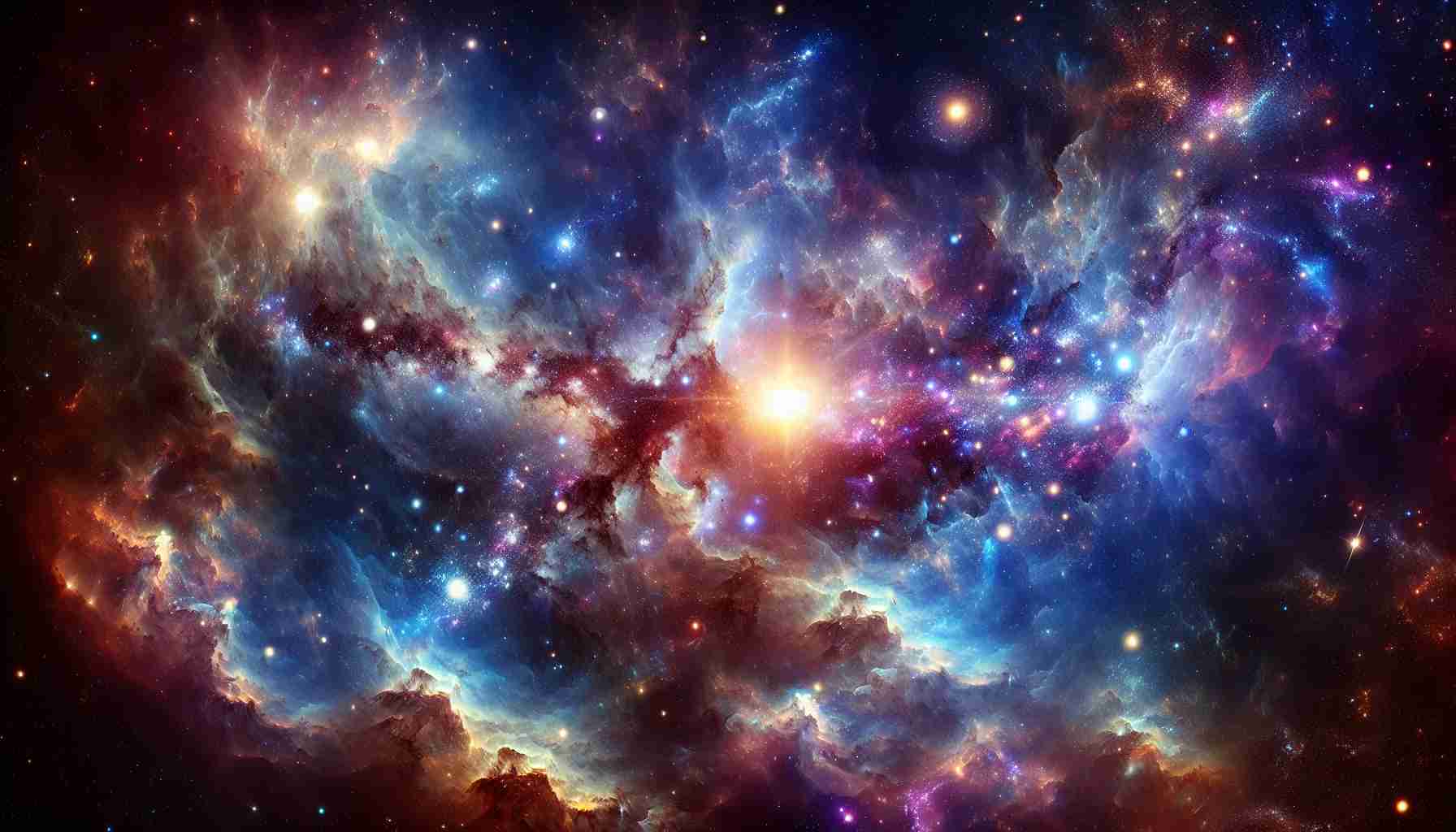- The Quipu superstructure stretches over 1.3 billion light-years, containing 200 quadrillion times the mass of the sun.
- Quipu, named after Inca knotted cords, spirals like an ancient script through the cosmos.
- This structure is the largest known in the universe, discovered by an international team led by the Max Planck Institute.
- Quipu and other giant structures like Hercules and Sculptor–Pegasus redefine our understanding of cosmic architecture.
- These superstructures comprise nearly half of known galaxy clusters.
- Over time, gravitational forces will disperse these formations, highlighting the transient nature of cosmic structures.
- Understanding these formations is crucial for insights into the universe’s expansion and cosmological models.
- Quipu illustrates the universe’s complexity, inviting us to explore its secrets before they are lost.
Amidst the cosmic tapestry, astronomers have uncovered a breathtaking masterpiece—the Quipu superstructure. This vast celestial web stretches over 1.3 billion light-years, dwarfing our own Milky Way and holding a mind-bending 200 quadrillion times the mass of the sun.
Imagine a relentless cosmic dance, where not just galaxies, but entire clusters swirl together, each bound in an intricate ballet. Quipu, evocatively named after the knotted cords of the Inca Empire, spirals through the universe like an ancient script written in stars and voids. This colossal entity, unveiled by an international team spearheaded by the Max Planck Institute for Extraterrestrial Physics, now claims the title of the universe’s largest known structure.
The revelation of Quipu is a breakthrough in understanding the universe’s architecture. It stands alongside other cosmic behemoths—Hercules, Serpens–Corona Borealis, and Sculptor–Pegasus—that redefine our cosmic neighborhood. These five superstructures weave through the dark fabric of space, encompassing nearly half of the galaxy clusters known to us.
However, this mighty formation won’t last forever. As time stretches beyond the boundless veil, gravitational forces will eventually unravel these superstructures, dispersing them into isolated fragments across the cosmos.
Such discoveries underscore the vital importance of understanding these vast cosmic formations. They ripple through our calculations of the universe’s expansion and may hold the key to unlocking the mysteries of cosmological models. In a universe once thought uniform, it is these superstructures that whisper tales of hidden complexity.
As we peer into the depths of the cosmos, Quipu serves as a humbling reminder of the universe’s grandeur, urging us to decipher its secrets before they drift away into eternity.
Unveiling Quipu: The Universe’s Largest Superstructure and Its Galactic Secrets
Exploring the Quipu Superstructure: New Discoveries Beyond Reach
The recently discovered Quipu superstructure is a breathtaking cosmic marvel that spans over 1.3 billion light-years and weighs a staggering 200 quadrillion times the mass of the sun. Named after the knotted cords of the Inca Empire, Quipu spirals through space, altering our understanding of the universe’s architecture. This monumental discovery, led by the Max Planck Institute for Extraterrestrial Physics, holds vital clues to the mysteries of cosmological models and the universe’s expansion. Let’s delve deeper into what makes Quipu an astronomical masterpiece and explore aspects that were not fully covered in the original article.
How Does Quipu Compare to Other Superstructures?
Comparisons:
– Hercules, Serpens–Corona Borealis, and Sculptor–Pegasus: Quipu stands with these colossal structures, collectively laying claim to encompassing nearly half of known galaxy clusters. Each varies in size, mass, and location in the universe, providing a comparative canvas for astronomers to decipher the universe’s architecture.
The Implications of the Quipu Superstructure
Use Cases and Limitations:
– Cosmological Models: The discovery of Quipu impacts our calculations of the universe’s expansion, helping refine models that predict cosmic evolution.
– Limitations: Observing distant superstructures like Quipu can be challenging due to current technological constraints, impacting the precision of data collection.
How Secure Is Our Understanding of Cosmic Structures?
Security Aspects and Sustainability:
– Knowledge Security: The fundamental understanding of cosmic structures is continually evolving, relying on technological advancements and data from institutions worldwide.
– Astrophysical Sustainability: While these structures, including Quipu, will eventually dissipate due to gravitational forces, their study offers sustainable avenues for scientific exploration.
What Are the Predictions for Quipu’s Future?
Predictions and Market Forecasts:
– Long-term Predictions: Though Quipu will eventually unravel into isolated clusters, it provides crucial insights that will steer future discoveries and the understanding of cosmic formations.
– Astrophysical Markets: Interest in novel discoveries like Quipu accelerates technological and analytical development, fostering growth in the astrophysics sector.
What Technological Innovations Are Needed to Study Structures Like Quipu?
Innovations and Technologies:
– Advanced Telescopes and Sensors: Enhanced imaging and data-capturing technologies are necessary to observe and analyze the intricate details of structures like Quipu.
– Computational Power: Improvements in computational capacity will aid in simulating and understanding the dynamic interactions within these superstructures.
Related Links for Further Exploration
Explore more about the universe’s opulent architecture and the ongoing research:
– Max Planck Society
– European Southern Observatory
As Quipu unravels its cosmic secrets, it challenges scientists to decode the tapestry of the universe. This awe-inspiring discovery not only enhances our cosmic knowledge but also sets the stage for future celestial revelations.












